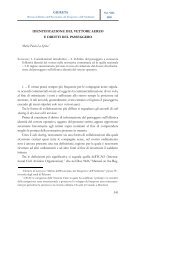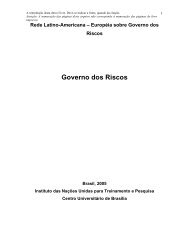Rome II and Tort Conflicts: A Missed Opportunity Abstract Contents
Rome II and Tort Conflicts: A Missed Opportunity Abstract Contents
Rome II and Tort Conflicts: A Missed Opportunity Abstract Contents
Create successful ePaper yourself
Turn your PDF publications into a flip-book with our unique Google optimized e-Paper software.
SYMEON C. SYMEONIDES ROME <strong>II</strong> AND TORT CONFLICTS<br />
66. Under arts. 19 <strong>and</strong> 20, the rights of subrogation, indemnification, <strong>and</strong> contribution between the<br />
parties mentioned in the articles may be governed by a law other than the law governing the<br />
victim’s claims against these parties.<br />
67. See supra text accompanying note 51.<br />
68. In fact, the possibility of dépeçage is the main reason cited by the Council <strong>and</strong> Commission for<br />
rejecting Parliament’s express rule to that effect. Although the recital does not enjoy the same<br />
status as an express rule in the Regulation’s main body, the recital either means what it says, in<br />
which case the possibility of dépeçage remains, or it does not mean what it says, in which case<br />
Parliament did not get anything from the purported compromise.<br />
69. See infra at text accompanying notes 129-34.<br />
70. ROME <strong>II</strong>, art. 4(1).<br />
71. Id.<br />
66<br />
contribution; <strong>and</strong><br />
67<br />
(g) Recital 33, which, as noted earlier, purports to authorize the application<br />
of the law of the habitual residence of the victim of a traffic accident in<br />
quantifying the recoverable damage, even when all the other issues resulting<br />
from the accident are governed by the law of the accident state. 68<br />
The above is a much longer list than the opponents of dépeçage would<br />
ordinarily tolerate, but one provision that is missing is the general rule of Article 4,<br />
especially the general escape of paragraph 3 in which issue-by-issue analysis (with the<br />
possibility of dépeçage) would have been most useful. The resulting problems are<br />
discussed later. 69<br />
IV. THE GENERAL RULE<br />
<strong>Rome</strong> <strong>II</strong>’s central provision is Article 4, which contains the general <strong>and</strong><br />
residual rules. Paragraph 1 of Article 4 provides that the applicable law shall be the<br />
70<br />
law of the country in which “the damage occurs” (lex loci damni). This law governs<br />
“irrespective of the country in which the event giving rise to the damage occurred”<br />
<strong>and</strong> “irrespective of the country or countries in which the indirect consequences of that<br />
event occur.” 71<br />
The operation of this rule can be illustrated by the following hypothetical<br />
scenario, which is used throughout this essay: Blasting operations by a Swiss mining<br />
company in the Swiss Alps cause a snow avalanche in the French Alps injuring a<br />
group of English tourists. Although there is some room for contrary argument, it<br />
seems that Article 4(1) views Switzerl<strong>and</strong> as the country of the “event giving rise to<br />
the damage,” France as the country in which “the damage occurs,” <strong>and</strong> Engl<strong>and</strong> as the<br />
country in which “the indirect consequences of that event occur.” Translated into<br />
simpler English, Article 4(1) provides that the applicable law is the law of the country<br />
in which the injury occurs, <strong>and</strong> more precisely the harmful physical impact (France),<br />
56 AMERICAN JOURNAL OF COMPARATIVE LAW (2008) PAGE 15 OF 46



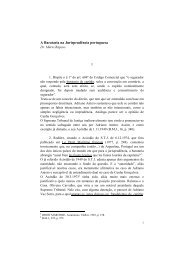

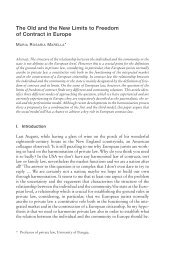

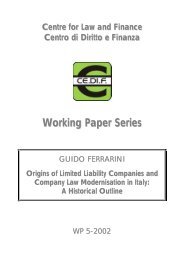
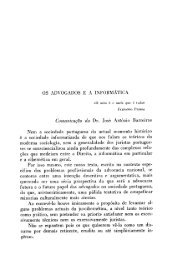
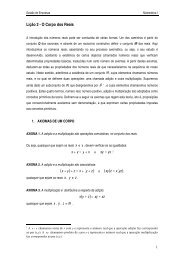
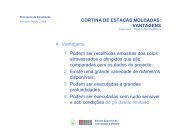
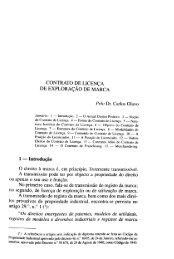
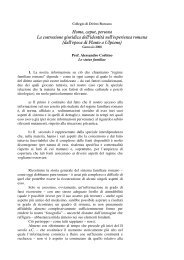
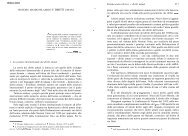

![Luigi Sapio Nozione di islām La parola “islām” [ ] è il mas.dar1 ...](https://img.yumpu.com/15836073/1/185x260/luigi-sapio-nozione-di-islam-la-parola-islam-e-il-masdar1-.jpg?quality=85)
